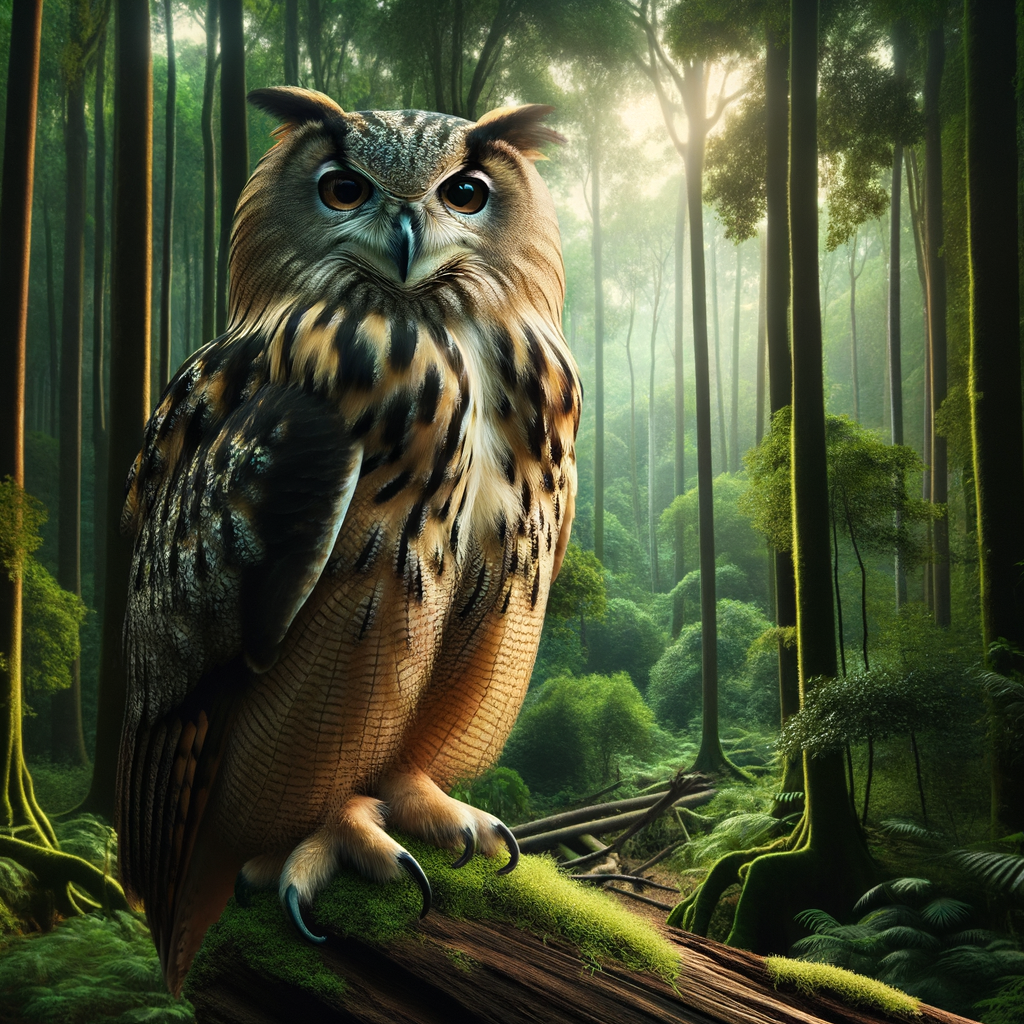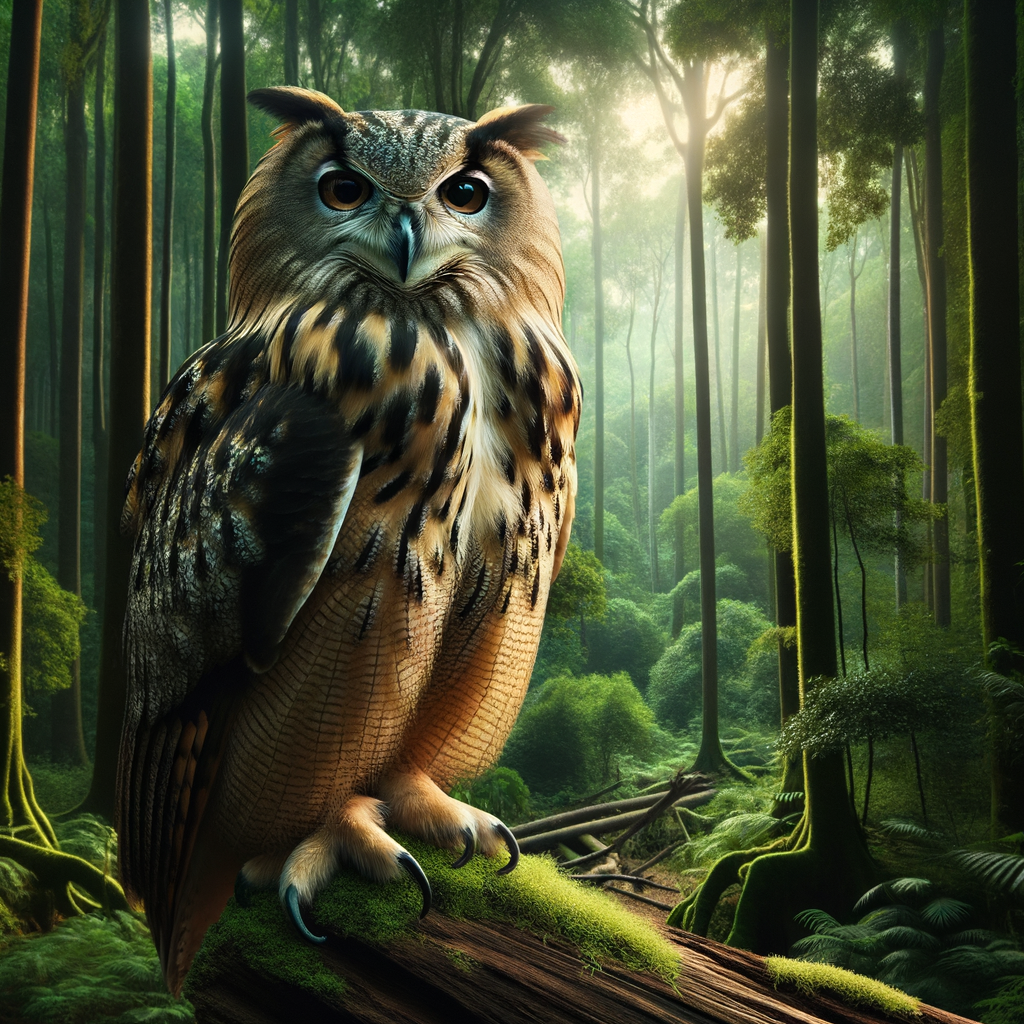
Introduction to Owls in Ecosystem Balance
- Overview of owls’ role in nature: Owls are fascinating birds known for their silent flight and nocturnal habits. They play a crucial role in maintaining the balance of ecosystems. By preying on small mammals, insects, and other birds, owls help control the population of these species. This balance is essential for a healthy environment.
- Explanation of the ecological importance of owls: Owls are top predators in many ecosystems. This means they are at the top of the food chain. By keeping the populations of their prey in check, they prevent overpopulation and the potential spread of diseases. For example, a single barn owl can eat up to 1,000 mice in a year, which helps farmers protect their crops. Without owls, the number of these small animals could grow too large, causing problems for the environment and humans.
Owl Predation Impact
Role of Owls as Apex Predators
-
Explanation of the term “apex predator”:
An animal at the top of the food chain. These predators have no natural enemies. They help control the population of other animals. This keeps the ecosystem balanced.
-
How owls fit into this category:
Owls are apex predators because they hunt and eat other animals. They have sharp talons and keen eyesight. This makes them excellent hunters. Owls do not have many natural enemies, so they stay at the top of the food chain.
-
Examples of owls’ impact as apex predators:
Owls help control the population of rodents and insects. For example, a single barn owl can eat up to 1,000 mice in a year. This helps farmers protect their crops. Owls also keep the number of small birds and other animals in check. This balance is crucial for a healthy ecosystem.
Owls in the Food Chain
-
Position of Owls in the Food Chain:
They are often at the top, meaning they have few natural enemies. Owls hunt small mammals, birds, and insects. This helps keep the populations of these animals in check.
-
Impact of Owls on Other Species in the Food Chain:
For example, by hunting rodents, owls help prevent these animals from becoming too numerous. This balance helps other plants and animals thrive. Without owls, there could be too many rodents, which can harm crops and spread disease.
Owls and Biodiversity
Owls and Habitat Health
- How owls contribute to a healthy habitatOwls play a crucial role in keeping habitats healthy. They are natural predators of rodents and insects, which helps control these populations. By doing so, they prevent overpopulation, which can harm plants and other animals.
For example, too many rodents can eat up seeds and young plants, making it hard for forests to grow. By keeping rodent numbers in check, owls help forests stay lush and green.
- Examples of habitats improved by owlsIn farmlands, owls help farmers by eating pests that can damage crops. This reduces the need for harmful pesticides.
In forests, owls help maintain a balance among various species. This balance is essential for the health of the entire ecosystem. For instance, the presence of owls in North American forests has been linked to healthier tree growth and more diverse plant life.
Another example is the grasslands. Owls in these areas help control the populations of small mammals, ensuring that the grasses and other plants can thrive. This, in turn, supports a variety of other wildlife, from insects to larger animals.
Impact of Owls on Species Diversity
- How owls contribute to biodiversityBy preying on various small animals, they help control populations of rodents, insects, and other species. This balance prevents any one species from becoming too dominant, which can harm the ecosystem.
For example, without owls, rodent populations could grow too large. This would lead to overgrazing and damage to plants. Healthy plant life is essential for many other species, so owls indirectly support a wide range of animals and plants.
- Case studies of owls enhancing biodiversityIn the forests of North America, the presence of the Northern Spotted Owl has been linked to healthier forest ecosystems. These owls help control the rodent population, which in turn supports the growth of various plant species.
Another example is the Barn Owl in agricultural areas. Farmers have noticed that fields with Barn Owls have fewer pests. This reduces the need for chemical pesticides, which can harm other wildlife. Thus, Barn Owls help maintain a more natural and diverse environment.
| Owl Species | Region | Impact on Biodiversity |
|---|---|---|
| Northern Spotted Owl | North America | Supports forest health by controlling rodent populations |
| Barn Owl | Agricultural areas worldwide | Reduces pest populations, lessening the need for pesticides |
Owls and Pest Control
-
How Owls Contribute to Natural Pest Control
Owls play a big role in keeping the number of pests down. They hunt at night, catching animals that can harm crops and spread diseases. This helps farmers and keeps our environment healthy.
One owl can eat many pests in a single night. This means fewer pests around our homes and farms. Owls are like natural pest controllers, working silently and efficiently.
-
Examples of Pests Controlled by Owls
Owls eat many types of pests. Here are some examples:
- Rodents: Mice, rats, and voles are common prey for owls. These rodents can damage crops and spread diseases.
- Insects: Some owls also eat insects like beetles and grasshoppers, which can harm plants.
- Small Mammals: Owls hunt small mammals like rabbits and squirrels, which can also be pests in certain areas.
By eating these pests, owls help keep the ecosystem balanced. This is good for farmers, gardeners, and everyone who enjoys a healthy environment.
Owls and Environmental Balance
Role of Owls in Maintaining Ecosystem Balance
- Explanation of ecosystem balance: Each plant and animal has a role to play. When everything is balanced, the ecosystem is healthy. For example, plants provide food for herbivores, and herbivores are food for carnivores. This cycle keeps the ecosystem stable.
- How owls contribute to maintaining this balance: They hunt small animals like mice, rats, and insects. By controlling these populations, owls help keep the ecosystem balanced. If there were too many mice or rats, they could eat too many plants or crops. This would disrupt the balance. Owls also help other animals by keeping the number of pests low. This means more food and resources for other species.
Impact of Owls on Environmental Health
- How owls contribute to a healthy environmentThey help control the population of small animals like rodents. This is important because too many rodents can harm crops and spread diseases. By eating these pests, owls help farmers and keep the ecosystem in balance.
- Examples of environmental improvements due to owlsFor instance, in some farming areas, the presence of owls has led to fewer rodents. This means farmers use fewer chemicals to control pests, which is better for the soil and water. Another example is in forests, where owls help maintain the balance of different animal species. This keeps the forest healthy and supports biodiversity.
Conclusion: The Importance of Owls in Nature
- Summary of the key roles of owls in ecosystems:Owls play many important roles in nature. They help control the population of small animals like mice and insects. This keeps the ecosystem balanced. Owls also help other animals by leaving behind food scraps that other creatures can eat.
- Final thoughts on the ecological importance of owls:Owls are vital for a healthy environment. They keep pest numbers down and support biodiversity. Protecting owls means protecting our ecosystems. By understanding their importance, we can better appreciate and conserve these amazing birds.






